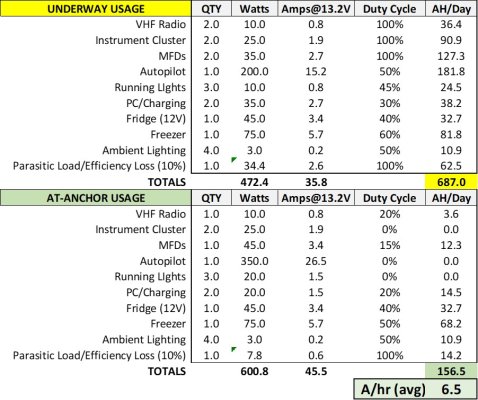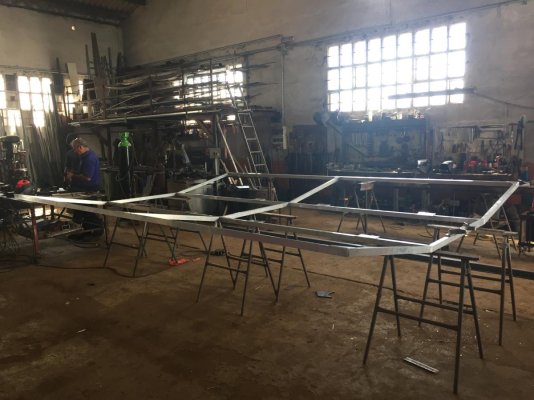660 amp hours, AGM batteries.
It's not the battery capacity, I have plenty of that, it's recharging them with solar. I can run my AC off my batteries for a short time, but my solar would never make up that debt. There isn't enough room, nor enough good places on my boat to mount enough solar to do that.
I've had solar on my boats for years. Theoretical charging means little in real life, in my experience.
The theoretical maximum for our previous sailboat to my recollection was about 26 amps (280 watts). The most I ever saw, under perfect conditions, was 22 or 24 amps (I forget) briefly, sun directly over the panels, no clouds. Usually, due to the angle, I guess, I was lucky to get 14 to 16 amps.
I saw a lot of people when cruising with movable panels who had got tired of moving them all the time, and had just come to accept the loss of power from less than optimum angles.
I love solar, but my experience has been to expect about half of what a panel is rated for during daylight hours on average, when mounted on a boat.
I expect it to keep my fridge running at anchor without having to crank the genset, on sunny days. That's about the best I have been able to pull off over the years when cruising.
Others here, may be much better at it, than me.


